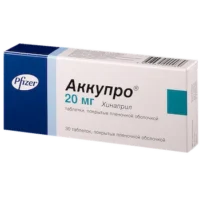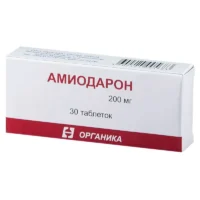Description
Romazik (rozuvastatine) Coated Tablets 20 mg. №30
Ingredients
- Active ingredient: Rozuvastatin 20 mg.
- Other ingredients: Microcrystalline cellulose, lactose monohydrate, crospovidone, magnesium stearate, hypromellose, triacetin, titanium dioxide, talc.
Dosage
Recommended dosage: 1 tablet daily, or as directed by a healthcare professional. Swallow the tablet whole with a glass of water, with or without food.
Indications
Romazik tablets are indicated for the treatment of high cholesterol and triglyceride levels in the blood. They are used to lower the risk of stroke, heart attack, and other heart complications in patients with cardiovascular diseases.
Contraindications
Do not use Romazik tablets if you are pregnant, breastfeeding, have liver disease, or are allergic to any of the ingredients. Consult your doctor before starting this medication.
Directions
Take Romazik tablets exactly as prescribed by your healthcare provider. Do not exceed the recommended dosage. If you miss a dose, take it as soon as you remember, unless it is almost time for your next dose.
Scientific Evidence
Studies have shown that rozuvastatin, the active ingredient in Romazik tablets, effectively lowers LDL cholesterol levels and reduces the risk of cardiovascular events. A meta-analysis published in the Journal of the American College of Cardiology demonstrated the superior efficacy of rozuvastatin compared to other statins in reducing LDL cholesterol.
Additional Information
- It is important to regularly monitor your cholesterol levels while taking Romazik tablets to ensure they are within the target range.
- Inform your doctor of any unusual symptoms or side effects.
- Maintain a healthy diet and exercise routine to complement the effects of the medication.
Pharmacological Effects: Rozuvastatin works by inhibiting HMG-CoA reductase, the enzyme responsible for cholesterol production in the liver. By lowering LDL cholesterol and triglyceride levels, it helps prevent the buildup of plaque in the arteries, reducing the risk of cardiovascular events.
Clinical Trials: Clinical trials have demonstrated the efficacy of rozuvastatin in reducing the incidence of heart attacks, strokes, and revascularization procedures in patients with hyperlipidemia. The JUPITER trial showed a significant reduction in cardiovascular events in patients with normal LDL levels but elevated high-sensitivity C-reactive protein levels when treated with rozuvastatin.





